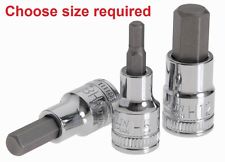Bit to Hex: A Comprehensive Guide for Understanding the Conversion
Understanding the conversion from binary bits to hexadecimal (hex) is crucial in various computing and programming scenarios. Whether you’re working with data representation, network protocols, or simply trying to decode information, this guide will walk you through the process step by step.
Understanding Binary Bits

Binary bits are the fundamental building blocks of digital information. Each bit can only have two values: 0 or 1. These bits are used to represent all types of data in computers, from text to images and audio.
For example, the binary number 1101 represents the decimal number 13. This is because the rightmost bit (1) is worth 1, the second bit from the right (0) is worth 2, the third bit from the right (1) is worth 4, and the leftmost bit (1) is worth 8. Adding these values together gives us 1 + 0 + 4 + 8 = 13.
Understanding Hexadecimal Representation

Hexadecimal representation is a base-16 numbering system that uses 16 different symbols to represent values. These symbols are 0-9 for the first ten values and A-F for the remaining six values. The hexadecimal system is often used to represent binary data because it can represent four binary bits with just one hexadecimal digit.
For example, the binary number 1101 can be represented as the hexadecimal number D. This is because the binary number 1101 is equivalent to the decimal number 13, and the hexadecimal number D represents the decimal number 13.
Converting Bits to Hexadecimal

Converting binary bits to hexadecimal is a straightforward process. Here’s how you can do it:
- Group the binary bits into sets of four, starting from the rightmost bit. If you have an odd number of bits, add a leading zero to make the number of bits even.
- Convert each group of four binary bits to its corresponding hexadecimal digit using the following table:
| Binary | Hexadecimal |
|---|---|
| 0000 | 0 |
| 0001 | 1 |
| 0010 | 2 |
| 0011 | 3 |
| 0100 | 4 |
| 0101 | 5 |
| 0110 | 6 |
| 0111 | 7 |
| 1000 | 8 |
| 1001 | 9 |
| 1010 | A |
| 1011 | B |
| 1100 | C |
| 1101 | D |
| 1110 | E |
| 1111 | F |
- Concatenate the hexadecimal digits to form the final hexadecimal number.
For example, to convert the binary number 1101 1010 1101 1101 to hexadecimal, you would group the bits as follows:
1101 1010 1101 1101
Then, convert each group of four bits to its corresponding hexadecimal digit:
1101 = D
1010 = A
Related Posts
bite force toys,Bite Force Toys: A Comprehensive Guide
Bite Force Toys: A Comprehensi…
bit by fire ant,Bit by Fire Ant: A Detailed Multi-Dimensional Introduction
Bit by Fire Ant: A Detailed Mu…






